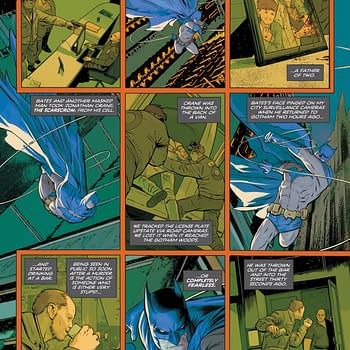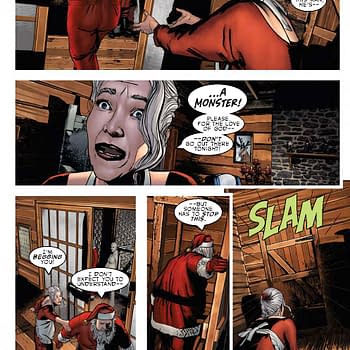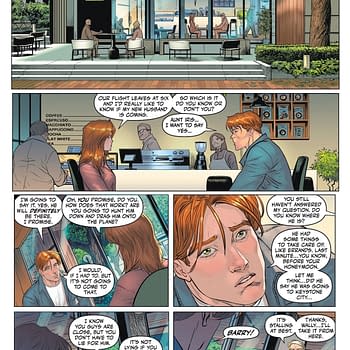Posted in: Comics | Tagged: Comics, David F. Walker, Dietrich Smith, dynamite, entertainment, Shaft: Imitation of Life
"I've Been A Fan Of The Character Since I Was A Little Kid." – David F. Walker Talking About Shaft
After the success of the first series, Dynamite is bringing David F. Walker back for another round with Shaft: Imitation of Life strating in February. Byron Brewer caught up with the artist to talk about the new series. Cover art by Matthew Clarke.

DAVID WALKER: I can't begin to tell you how good it feels. My hope had always been that there would be more than one opportunity to play around with Shaft—to develop his character more, and that's what is happening. There is a process with writing this character that I don't go through with any other comic, and that has created a stronger connection. Basically, I letter this series, which isn't something I really do any more. But lettering each issue gives me an opportunity to tweak the story far more than I do with anything else, so it gives me an opportunity to really sit with the story, and play around with things as the art may dictate, or if I simply feel I can make something stronger.
BB: You went out of your way to make your previous Shaft book feel like its time period. At what stage in Shaft's life does this adventure take place?
DW: This adventure takes place right after the one detailed in the original Shaft novel by Ernest Tidyman. In fact, I open this story with a scene that loosely adapts the climax of that first novel, and then jumps ahead a few months. At this point in his career, Shaft has had his first headline-making case, which has made him something of a celebrity. He's dealing with the personal fallout from that case, which took him down a violent path, and showed him exactly how dangerous his line of work can get. If you go by the original novels, this story is set in 1971, though I'm playing a bit loose with certain things that leave the timeframe a bit more open to possibility.
BB: Tell us again about who John Shaft is to you, and your deep connection with this character.
DW: I've been a fan of this character since I was a little kid—more than forty years now. I especially love the character as depicted in the novels by Ernest Tidyman, and I'd thought about doing a comic version of Shaft for at least the past twenty years. Now that I've written the character in both comic form and in a prose novel (Shaft's Revenge), and been in contact with the Tidyman estate, and his widow Chris Clark-Tidyman, I feel an even deeper connection. I can't say that he feels like my character, because he's not, but I've been entrusted with him, and there is a connection. As a writer, you look for that connection with your characters. Are they an extension of you? Are they extensions of your friends or you family? By that, I mean how do you know this character, how do you relate to them, and how much does the character trust you to tell their story.
BB: What can you tell us about this storyline?
DW: Shaft is still in a bad place mentally following the case he worked in the original Tidyman novel—which is detailed in the first issue. He needs to get back to work, and he takes a missing persons case that he knows probably can't be solved, but is easy money. Basically, he's been hired by the parents of a young man who is too old to be an actual runaway, and in likelihood just wants to be left alone. Shaft tells the guy's parents it is a waste of time and money, but they hire him anyway. Things get a bit complicated from there. While all of this is going on, Shaft is also hired to be a consultant on a low-budget independent film about a black private detective. He is essentially working as a consultant on a blaxploitation movie that is inspired by his life. Of course, these two seemingly unrelated jobs are going to intersect at some point, because that's what happens in stories like this.
BB: How is it working with artist Dietrich Smith?
DW: Dietrich has been great. He has a very different style from the last artist, Bilquis Evely, which serves as a great contrast. Dietrich has a much grittier style, and it serves the story and the character, because John Shaft is in a much grittier place. Dietrich starts the first issue out strong, and he really seems to hit his stride someone around page eight or nine. That is to say that he hits this moment with the art, where you get a sense that he's taking ownership, and not afraid to leave his personal stamp on the work. Anyone who saw the work Bilquis did on that first series might be concerned about how to follow up her work. The key thing is to not do what she did, or try to be like her. Dietrich is making the book his own, with his own style. I'm having a great time working with him.














